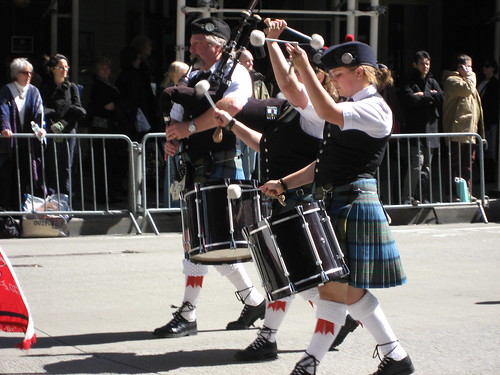»A few words on growing up Scots
In my younger years, I often fell asleep hearing pipers practicing on a nearby hill, and a subliminal message has since compelled me to avoid wearing pants -- although I missed last week's Wear a Kilt To Work Day, part of the Tartan Week festivities. Some words on the historical importance of the kilt (and of whisky), from The Glenlivet's advertising posters:
The Glenlivet and the kilt share more than just Scottish origins – both were once against the law! Under England’s King George IV, the 1746 Dress Act banned all items of Highland dress. The same monarch imposed excise laws banning all production of whisky in 1781. Despite this, when King George IV visited Scotland in 1822, he himself insisted he would drink no other whisky than the “illegal” The Glenlivet. On this same trip, the king and his retinue also donned tartan outfits, reinstating both Scotch whisky and the tartan in the same visit.Kilt is a Scottish word that means “to tuck up the clothes around the body.” The word derives from the Old Norse kjilt, which means “pleated.” A 1746 description of the versatile garment states: “The garb is certainly very loose, and fits men inured to it to go through great fatigues, to make very quick marches, to bear out against the inclemency of the weather, to wade through rivers and shelter in huts, woods and rocks upon occasion; which men dressed in the low country garb could not possibly endure.” Today, the kilt is generally regarded as formal dress and can be seen at wedding and black tie occasions.
The mutual vocabulary of Scots and Swedish intrigues me: words such as bairn and the comparable formations of sijkhus stand out. Through reading about the history of Scots, I came upon the European Bureau for Lesser-Used Languages, which promotes languages and linguistic diversity.


